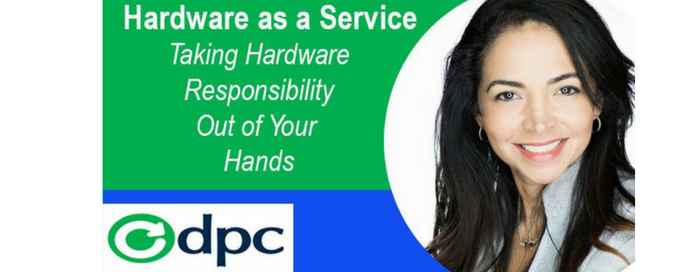In the past, I have written several articles on this subject so I’ll be as straight to the point as I can get in this one.
For those of you that aren’t familiar with the term Hardware as a Service (also known as HaaS) it basically means that your managed service provider (MSP) rents you the equipment. The MSP is responsible for installing, monitoring, and supporting the hardware. If it fails or it’s discontinued, it’s repaired or replaced by the MSP. You pay a monthly rental fee for the hardware and participate in the support plan that allows the MSP to do all of those things.
The benefits of a HaaS plan for you and your practice are:
1) The responsibility of ownership is no longer yours. In other words, if it breaks, you don’t have to deal with replacing it.
2) Upgrading your practice with CBCT or some other new technology – doesn’t mean you have to take a loss on the old hardware and go out and buy new equipment.
3) No more out-of-date hardware means you can upgrade your core tech like practice management software and digital x-ray programs when needed, keeping you on the cutting edge.
4) You can now write off your payments as an operational expense instead of a capital expense. If you aren’t sure what this means to you then I urge you to talk with your CPA. Virtually every CPA I have come across recommends HaaS over capital expenditure in this case. Why write off a portion of your investment when you can write off the entire amount?
5) Adding hardware in a new operatory or office is easier because there is no capital outlay required. You can budget the cost of adding a pc in with your monthly expenses.
Coincidentally, there is a benefit to your MSP as well in the form of better personnel budgeting. MSP’s are better able to calculate the appropriate number of I.T. staff to hire based on the number of Managed Service clients they serve. What this means to you is that the MSP isn’t over-staffing which keeps your costs lower. It also means they aren’t under-staffing which causes long wait times for service – especially when there is a production-stopping technology emergency (server down, can’t take x-rays, etc.) happening in your practice.
They can also calculate the efficiency of their team and assign goals that relate to how efficiently your network runs and stays running. This is also a huge benefit to you because instead of the MSP being rewarded for time spent repairing your network (break-fix work), they are now rewarded for keeping your network running as smooth and problem free as possible.
The bottom line is that HaaS puts everyone on the same side of the table. When your network and hardware run smoothly and interruption free, both you and the MSP win. When you have issues, both you and the MSP lose. The motivation is obvious – everyone wants to win.

